Summary
A guide for outdoor bouldering around the Bay Area.
If you’ve been going to the climbing gym and are interested in climbing rocks outside, this guide is for you!
I organize outdoor climbing trips once every month or two. If you are interested in joining, feel free to contact me.
What to bring
Guidebook
Golden State Bouldering is a must-buy. They also have a digital edition.
- You can probably squeak by with Kaya/Mountain Project, but the increased quality of experience having the book is well worth the $50 price tag if you intend to go more than once. It’s a delightful object to own and hold (plus it will keep you not lost + on safe routes).
Shoes
You absolutely need climbing shoes. Nearly all outdoor bouldering routes are impassable without climbing shoes for beginner/intermediate climbers.
If you’re an indoor climber, wearing whatever shoes you use for the gym will be just fine!
If you have a bit more money to spend / are more serious about going outdoors, you should buy a separate outdoor pair.
- Climbing outdoors wears out your shoes much more quickly compared to climbing indoors, so you may want to reserve your really nice pair for the gym.
- I prefer to optimize for comfort over performance/downturn for outdoors, because taking off your shoes / putting on your hiking boots every time you want to walk around can get annoying. I use the La Sportiva TC Pros even though they’re not technically designed for bouldering— but I can walk around in them the entire day and still feel comfortable.
Crashpad
Sports Basement offers $30 crashpad rentals! Just remember to order them several days ahead of time, since they’re often out and will need to ship one to the store for pickup.
If you’re looking to purchase one:
- You can find some cheaper used ones on FB Marketplace or at the climbing gym (I’ve seen them lying around at Dogpatch and Mission Cliffs).
- Prefer a large crashpad for your first (like the Organic Big Pad or Metolius Magnum tri-fold) since a regular-size pad will be pretty sketchy by itself for most climbs.
- Make sure the crash pad can fit in your car before you purchase it, if buying online.
Other things
- A brush will be especially helpful. It makes a huge difference outdoors where holds can be dusty/dirty.
- Bring anything you’d normally have for a day hike (extra water, hiking boots, sun protection, bug spray, snacks, etc.)
- Camp chairs and a picnic blanket are an awesome luxury for resting on in between sends, if you have them!
- Bring band-aids and a first aid kit to treat minor scrapes.
Staying safe
Outdoor bouldering is inherently riskier than climbing in a gym, but given a bit of conscious effort it should still be a safe activity.
- Make sure your spotters know what they’re doing! You should always have at least 1 person looking out for you as you climb.
- Watch a few videos on YouTube so you have an idea of how it looks.
- Don’t be afraid to ask a nearby climber to spot you if nobody in your group has done it before. They’ll be happy to give you some tips too.
- If your crash pad isn’t large enough to cover the entire fall area, you’ll probably need a second spotter to move the pad as you climb.
- Scout out the downclimb before you go. Coming down from a boulder is often more difficult and dangerous than going up.
- Know how to assess risk. Everyone has a different risk tolerance for things like highballs and no-fall zones; consider your personal boundaries before you’re halfway up.
- If you’re new, stick with the safest climbs (flat landings, short fall distance, good holds) first and work your way up. The safety of a climb is often independent of its grade (there are very safe V8+ traversals, and also very dangerous 20-foot-tall V1 highballs).
- Unlike at the gym, bailing is not safe at every position. Don’t climb anything you’re not confident in sending, that you might not be able to downclimb or jump off from.
Location Guides
Most outdoor climbs in the Bay Area are sandbagged, meaning that they are more difficult than their grade suggests if you’re used to indoor/gym grading. (For example, Castle Rock being +2-3 means the typical V0 is about as difficult as a V2 or V3 at a nearby Movement gym.)
These guides are limited to places I’ve been to so far, so it’s rather incomplete. Get a guidebook if you want the full list of places you can go!
Castle Rock
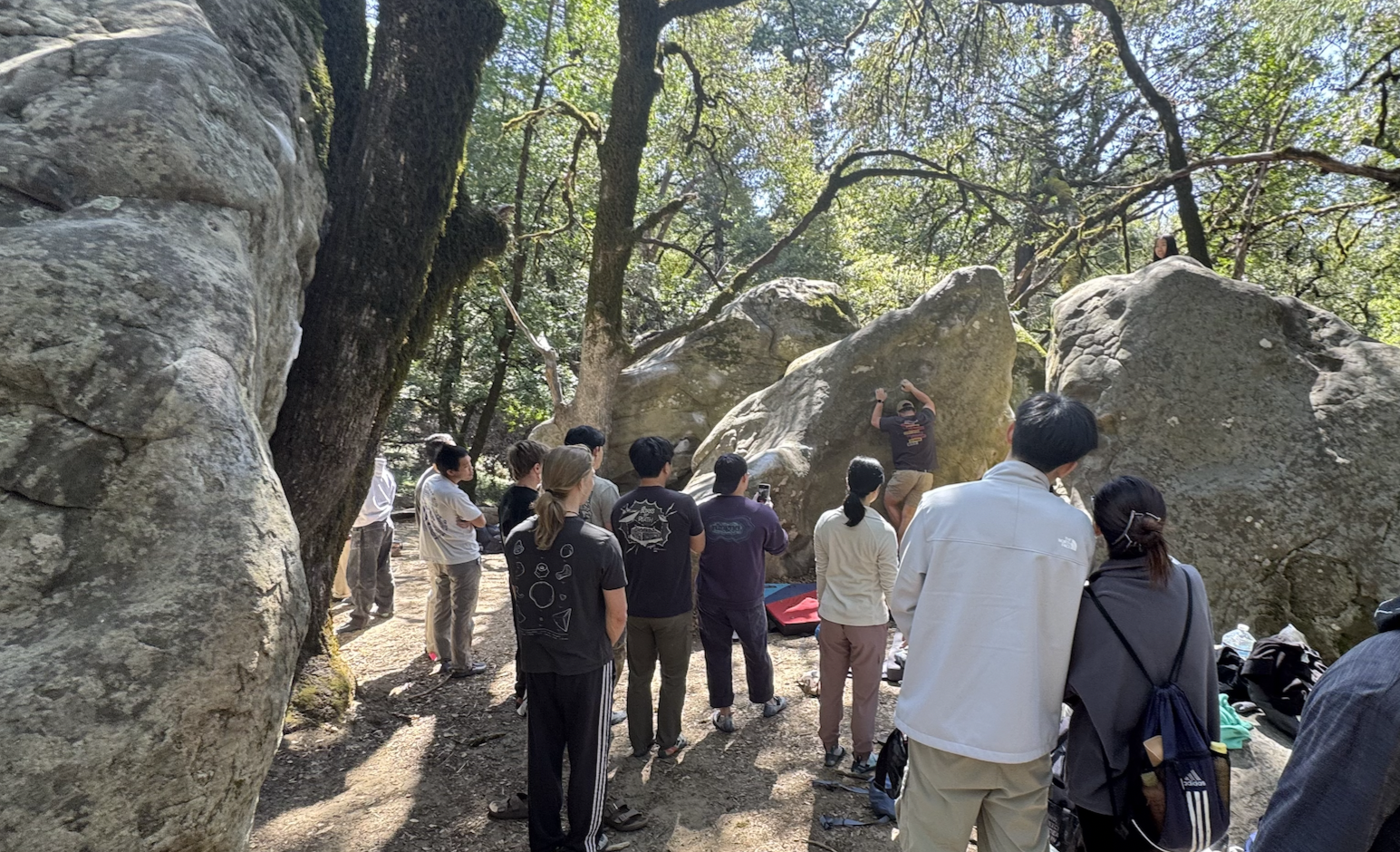
- Location: Near the intersection of Hwys 9 and 35, in the Santa Cruz Mountains. ~30min drive from Cupertino; 1hr south from SF via I-280 + Hwy 35.
- Awesomeness:



- Sandbagged: +2-3 grades
- Approach: easy (0.5mi hike with a mild incline)
Castle Rock is the best overall spot to climb outside in the Bay Area by several metrics (accessibility, diversity of routes, quality of routes, vibes). It’s a popular spot on the weekends and often feels very much like a gym: lots of fellow climbers to meet and steal pads/beta from.
Castle Rock itself is a pretty unmistakeable 40-foot-tall behemoth with a variety of fun caves, some of which are accessible via some low-risk rock scrambling. It mostly offers roped climbing with a few highball routes on the back (on the Waimea Wall).
The most popular set of boulders are the Magoo’s. You can spot Mr. Magoo from his huge nose and eyes:
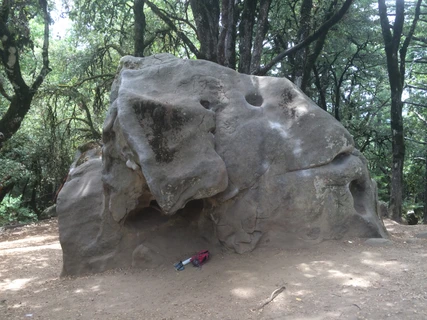
- The very left side of Mr. Magoo has a VB slab climb which I really enjoy for warmup.
- The right side of the nose has a fun leanback climb. One of my favorite outdoor V0’s of all time.
- The left side of the nose has a tricky arete-based V2 with finger pockets so good it makes you wonder if they’re secretly gym holds coated in sandstone.
My current project is the Beak Traverse (V3), which is on the shortlist of my favorite outdoor climbs. Now if only i could actually send it…
Some nearby spots a short hike away include the Parking Lot Rock and Indian Rock (not to confused with the one in Berkeley) for even more bouldering, and Goat Rock for top-roping with a walk-on anchor.
There are two spots for parking. If you’re coming from the Bay Area, you’ll run into the big main lot first, which costs $10 and is an additional 0.5mi away from the boulders. If you keep driving, you’ll see some free roadside parking. This area fills up quickly on busy days, so arrive early if you want to park here.
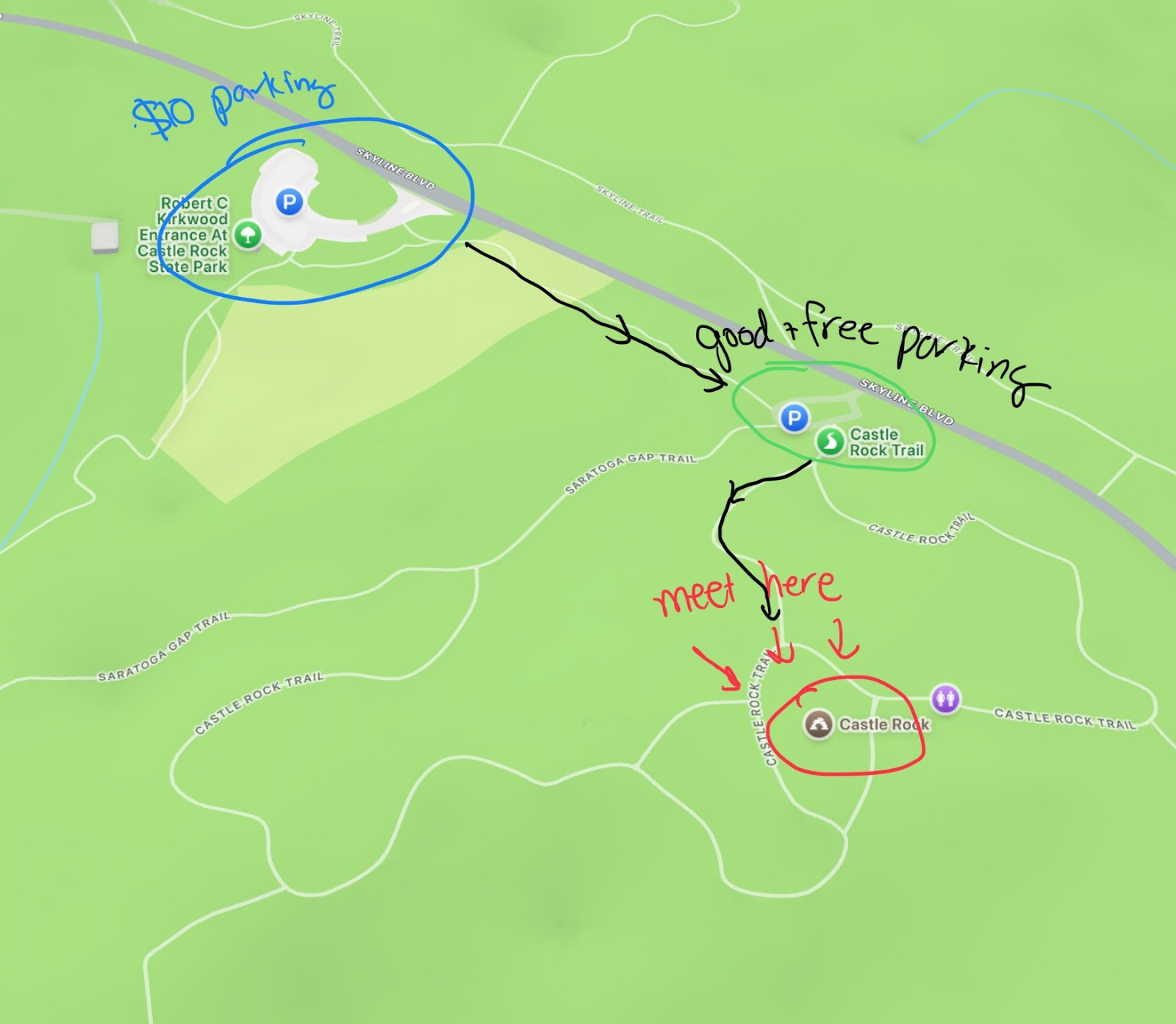
Yosemite Camp 4
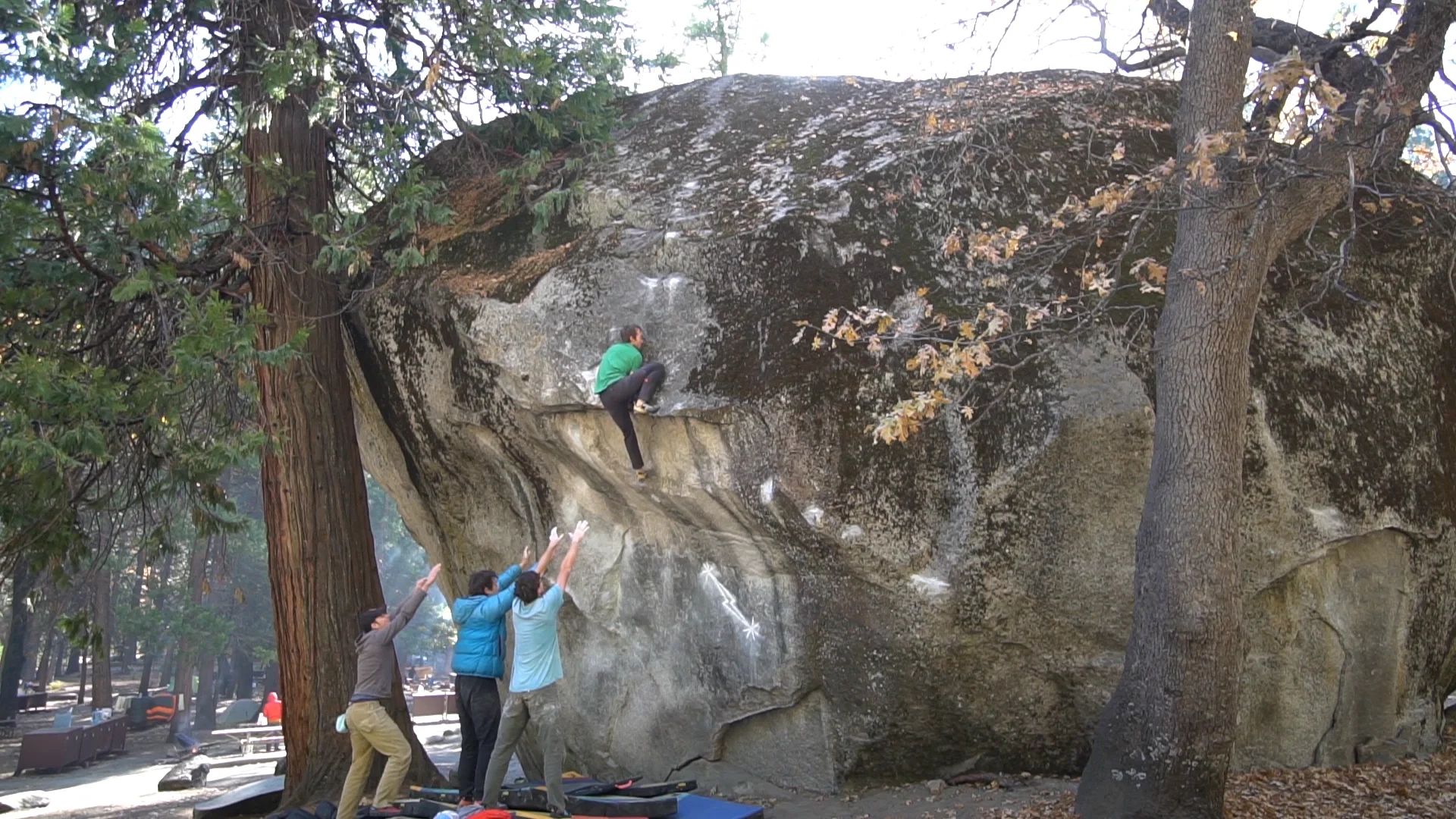 (photo source: https://www.trainingbeta.com/james-lucas-how-i-trained-for-midnight-lightning/. i did not actually send midnight lightning lol.)
(photo source: https://www.trainingbeta.com/james-lucas-how-i-trained-for-midnight-lightning/. i did not actually send midnight lightning lol.)
- Location: in Yosemite Valley, ~4hr drive from SF
- Awesomeness:



- Sandbagged: +4-5 grades
- Approach: very easy (right next to parking lot/campsite)
Not really a Bay Area spot, but it’s easily one of the best bouldering spots in the entire world and you’re going to want to make the drive over at some point.
You’ll want to navigate to Camp 4, which is a campsite in the Valley close to Curry Village. It’s notoriously difficult to actually book a campground, but there’s ample day-use parking.
There are very few options for easy bouldering, since the rocks are super slick granite. Expect gym-V4 or harder to be marked as “warm-up” climbs on guidebooks, etc.
You’ll also have the chance to walk by the most famous bouldering problem and first-ever V8, Midnight Lightning. There’s typically a group of folks trying it near-24/7, so you can sneak on and try the first couple moves if you’d like.
The Yosemite Mountaineering School offers guided climbing if you’re looking to go on the arguably even better rope climbing routes around Camp 4. Although on the pricey side, I would highly recommend it— they’ll anchor a whole bunch of ropes, keep you safe, teach you how to climb crack/trad, and (if you’re lucky) share crazy dirtbagger stories about what it’s like to live and climb full-time in Yosemite.
Turtle Rock
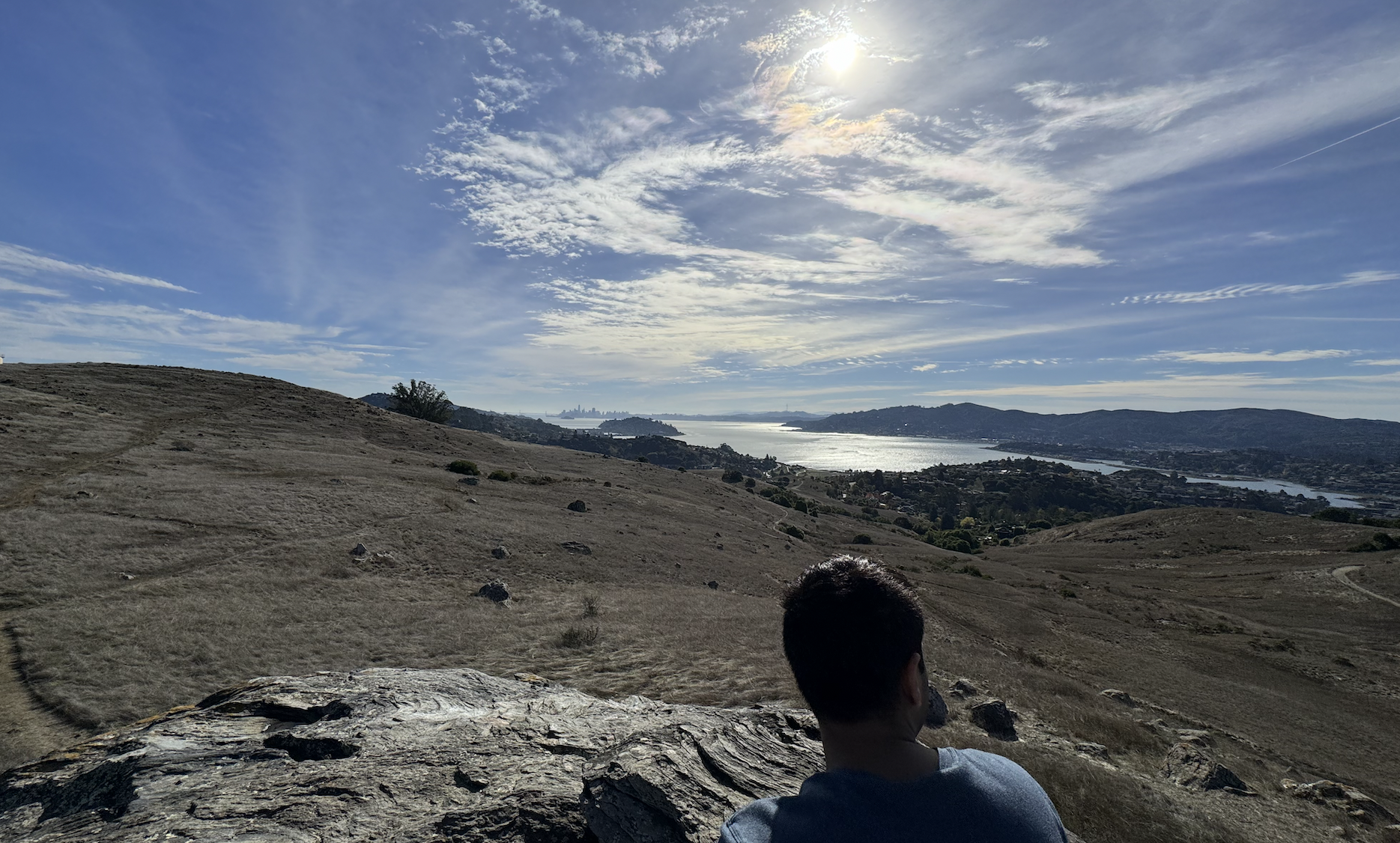
- Location: Tiburon, Marin County. About a 15 minute drive north from the Golden Gate Bridge via Hwy 101
- Awesomeness:


- Sandbagged: +1-2 grades
- Approach: easy (1mi hike along well-maintained trail, mild elevation gain)
Turtle Rock is maybe the best beginner bouldering spot in the entire Bay— there are super flat+safe landings, chill topouts, low height, and a ridiculously easy downclimb. The V0’s actually feel like V0’s! Easily-accessible routes go up to V3, and there’s also a super long V5 traversal that goes around the entire rock.
There’s also the nearby Split Rock, which offers some amazing beginner-level top rope routes with a walk-on anchor point.
There is plenty of street parking along Taylor Road and several other entrances around the park. There’s no parking lot.
Indian Rock (Berkeley)
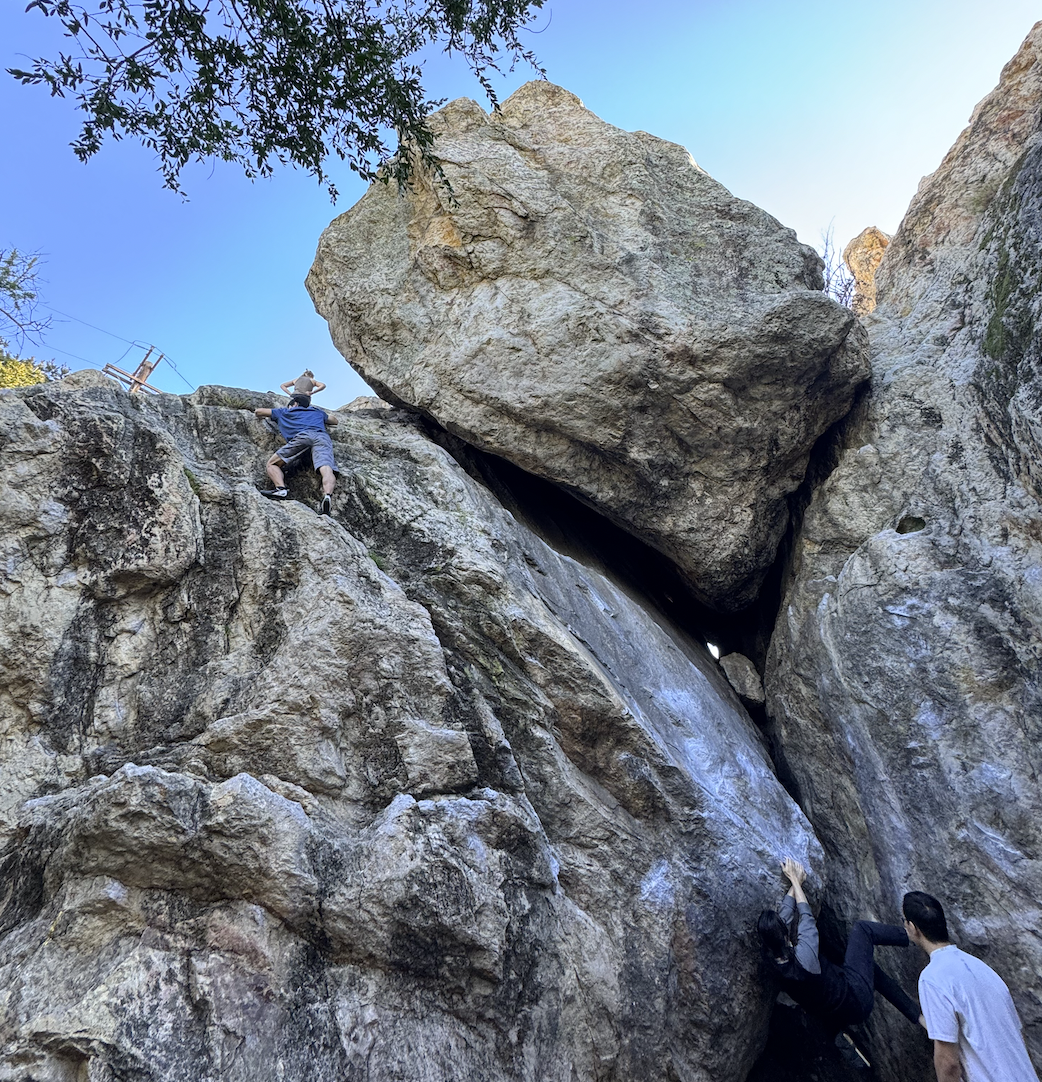
- Location: North Berkeley, ~20min drive from the Bay Bridge
- Awesomeness:


- Sandbagged: +2-3 grades
- Approach: very easy (inside Indian Rock Park, ~100ft from the street)
One of the OG Bay Area spots with a lot of history. Incredible classic climbs for every skill level.
As a warning, the routes here are very, very high. Luckily the landings are fairly safe, but you will probably need multiple large crash pads (and/or an attentive team of spotters) to cover the entire fall zone.
There’s also an opportunity for some relatively safe free solo climbs up ~30 feet! (They’re #37 to 40 in Golden State Bouldering.)
Stinson Beach

- Location: Marin County, along Hwy 1. About a 30min drive from the Golden Gate Bridge
- Awesomeness:

- Sandbagged: +1-2 grades
- Approach: easy (0.7mi walk along the beach; includes some mild rock scrambling)
Climbing at Stinson Beach is very dependent on the tides and sand level. At its best (high sand low tide) the landings are super soft and flat; at its worst, you’ll be falling onto pointy wet rocks.
There aren’t too many intermediate-level climbs here. Lots of VB/V0 level climbs on some of the smaller boulders, and many great but tough overhang climbs on the Are You Experienced boulder (pictured in the image above).
Nearby is also Mickey’s Beach, which has a few more boulders and top rope routes about a mile south. (Warning: it’s a nude beach.)
There is a lot of parking, since it’s a popular beach destination. The best parking is as far south as you can get a spot.


 blossom
blossom